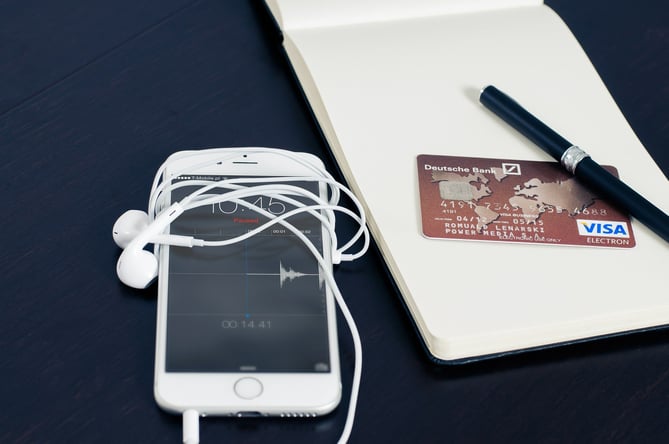
What is Willingness to Pay?
If a company understood customer willingness-to-pay before any negotiations commenced, they could develop strategies to realise that price during the negotiation. Salespeople rely on their experience and selling skills to draw out this information using historical data and value-based pricing methodologies to understand how a customer values their products.
The Top Considerations When Evaluating Willingness to Pay
Market Research: Thoroughly researching the market helps understand customer preferences, behaviors, and perceived value of products or services. This knowledge is crucial in determining how much customers are willing to pay.
Competitor Analysis: Analyzing competitors' pricing strategies and market positioning provides insights into your offerings' comparative value. Understanding customer perceptions vis-à-vis competitors helps set appropriate pricing levels.
Value Proposition: Clearly communicating the unique benefits and value of your products or services influences customers' perception of worth. A strong value proposition can positively impact customers' willingness to pay higher prices.
Customer Segmentation: Segmenting the target market based on varying needs and preferences helps tailor pricing and marketing strategies. Recognizing different customer groups' WTP allows for effective customization.
Cost and Profit Margins: Balancing pricing with production and operational costs is crucial for profitability. Setting prices too low may lead to losses, while excessively high prices could deter customers from buying.
By prioritizing these considerations, businesses can make informed pricing decisions, enhance customer satisfaction, and achieve sustainable profitability.
The 9 Factors That Effect Willingness to Pay
1. Price V Quality Effect
Buyers will be more willing to pay if they believe that a higher price signals higher quality. Consumers use the price as a mental shortcut to gauge product or service quality when information is limited. Additionally, higher prices create an allure of exclusivity and prestige, appealing to those seeking premium or luxury products. Once consumers believe in the superiority of higher-priced items, they tend to confirm this belief by seeking supporting evidence and may overlook contradictory information. Moreover, some consumers willingly pay a premium for perceived higher quality to mitigate the risk of making a subpar purchase.
2. Unique Value Effect
If the buyer values the unique attributes of your product they will be more willing to make a purchase. Consumers are more likely to be attracted to and interested in products or services that are positioned as exclusive, rare, or one-of-a-kind. The perception of uniqueness might enhance the perceived value of the item and potentially lead to increased demand or willingness to pay a premium price.
In a nutshell, they value your product above others in the marketplace.
3. Expenditure Effect
This one is very simple, buyers are less willing to buy an item the higher the total expenditure, both in pounds and pence terms and as a percentage of their income and/or budget.
4. The Effect of Customer Characteristics
Several pricing studies have found that customer characteristics may influence WTP. These differences in WTP may depend on demographic, psychographic, or behavioral characteristics.
The demographic variables include age, sex, race, income, marital status, education, and geographical location as well as psychographic variables such as activities, interests, opinions and lifestyle.
For example, different age groups and generations may have varying perceptions of value and different priorities when making purchasing decisions. Younger generations might be more willing to pay for innovative features, while older customers may prefer established and reliable products at a lower cost.
5. Environmental Effect
Macro environmental factors such as the overall state of the economy could influence customer willingness to pay. For example, in a downturn in the economy the customer's willingness to pay may be lower as compared to a period when the economy is booming. Socio-cultural alignment, technological advancements, political policies, environmental awareness, demographics, and global events also influence willingness to pay for products and services. Adapting strategies to these factors is crucial for businesses and marketers to stay competitive.
6. Fashion Effect
Fashions increase the demand for certain products and services and consequently increase the customer willingness to pay for those products. They are shaped by social influences like celebrities and influencers, driving higher demand for endorsed items. Novelty and exclusivity create urgency and FOMO, boosting demand for new products. Emotions and self-expression drive customers to pay more for items that resonate with their identity. Cultural trends and branding also impact demand, while peer influence encourages paying a premium for items favored by social circles.
7. Fairness Effect
Despite this appearing as a somewhat straightforward "effect" as in, if the customer perceives the price to be fair in comparison to similar products on the market they will be more inclined to buy, there are many factors that affect what a customer feels is fair price. Customers' perception of price fairness is influenced by various factors, including price-quality perception, competitive landscape, value proposition, brand reputation, transparency, personal values, perceived differentiation, and reviews. These elements shape how customers evaluate a product's price and determine whether it is reasonable compared to similar offerings in the market. Understanding and managing these factors are crucial.
8. Customer Research Effect
Buyers' perceptions of current and future prices have a significant impact on their decision-making. If buyers believe that the current price is higher than it will be in the future, they may delay their purchase, anticipating a lower price and maximizing value for money, especially for non-essential or luxury items. Conversely, if they perceive the current price to be temporarily lower, they may be motivated to make an immediate purchase to save money in the long run, commonly observed during inflation or when supply shortages and increased demand are expected.
9. Two-for-the-price-of-one Effect
Or, 3 for 2
Related Posts
7 Proven Ways To Increase RevenueSources
http://thesocialmarketplace.org/toolkit/price/10-factors-that-affect-a-customers-willingness-to-payThe Strategy and Tactics of Pricing: A Guide to Growing More Profitably, 5th edition by Thomas Nagle, John Hogan, and Joseph Zale.
http://freepatentsonline.com/article/Review-Business-Research17798355.html



